THE first phase of artifacts from the Hornbostel Collection returned to the Marianas on Tuesday. They were hand-carried from Hawaii to Saipan by NMI Museum of History and Culture Executive Director Leonard Leon.
The artifact collection was named after Hans G. Hornbostel, a U.S. Marine who was hired by the Bishop Museum in the 1920s to collect artifacts and other objects from the Marianas. The collection he amassed totals more than 10,000 artifacts, including latte stones from Rota and Guam. Over 2,000 artifacts were from around the NMI, with the remainder coming from Guam.
As Leon told Variety in a previous interview, this first set of items includes fishing implements, jewelry, a mortar and pestle, pottery sherds, and more.
When the artifacts arrived, they were welcomed to their original homeland by cultural dancers, the Indigenous Affairs Office, the Arts Council, Gov. David Apatang, Lt. Gov. Dennis Mendiola, and other island residents.
Local suruhuanu Donald Mendiola said a chant over the artifacts as part of their welcome.
The artifacts were displayed at the airport for residents to view.
Henry Hofschneider, the governor’s chief of staff, was present in Hawaii for the official artifact rematriation ceremony organized by the Bishop Museum. At the Francisco C. Ada/Saipan International Airport, he confirmed that over 2,700 artifacts from the Hornbostel Collection that were taken from the NMI will return over the next few years.
“These artifacts that are here, that were once buried in the jungle and connected us to whoever made them, are finally back home,” he said. “These are very important artifacts. They tell the story of the people of the Marianas.”
One of the central artifacts being returned to the NMI is a latte set originally from Rota. Hofschneider said the government of Guam and the U.S. Navy are coordinating how to return the latte to the NMI and also return the latte in the collection that originated from Guam.
He added that an oversized slingstone originally from Luta is also unusual among others in the current NMI Museum’s collection.
“It’s very significant because of what material it was made of, which is basalt,” he said. “Basalt isn’t really easy to carve out, and the fact that it’s a size we don’t normally see is incredible as well.”
A circlet in the collection may be of Chuukese or Marianas origin. There is also a clay bead that resembles ancient Palauan money. Leon said such pieces have been found elsewhere in the Marianas and could be jewelry or a fishing tool. The pestle Leon displayed is also different from the more commonly shaped pestles in the Marianas. It resembles pounding tools from other parts of Micronesia.
Leon said further research on these and other items in the collection could be evidence of maritime trade in the Marianas.
“Most [Marianas circlets] are made out of turtle shells. This one we’re not too sure what material it is until we start cleaning it or do x-ray scans on it,” Leon said. “This supports the theory that the Northern Mariana Islands have always been kind of like a hub for trade and communication between the rest of Micronesia and the Chamorros.”
Regarding the latte set, Leon said that the plan is to bring them to the NMI Museum of History and Culture.
“We support bringing them back to the Marianas in general,” he said. “That was our first goal, and after discussion with some members of the Rota community as well as the mayor, we have come to an agreement to station them at the NMI Museum… Having [the latte] at the NMI Museum for the time being will allow us to support that educational piece to continue to reaffirm identity for the Chamorro kids.”
Leon said the return of the artifacts helps ensure that future islanders have security in their identity.
“In today’s society, where identity continues to be challenged — or indigenous identity continues to be challenged — these artifacts will support the young generation’s desire to ground themselves, to rediscover their identity and their ancestry,” he said. “It’s great to search on the web for what these mean, but if you’re not going to be able to hold them and touch them and see them in front of you, then there’s really no tangible connection.”
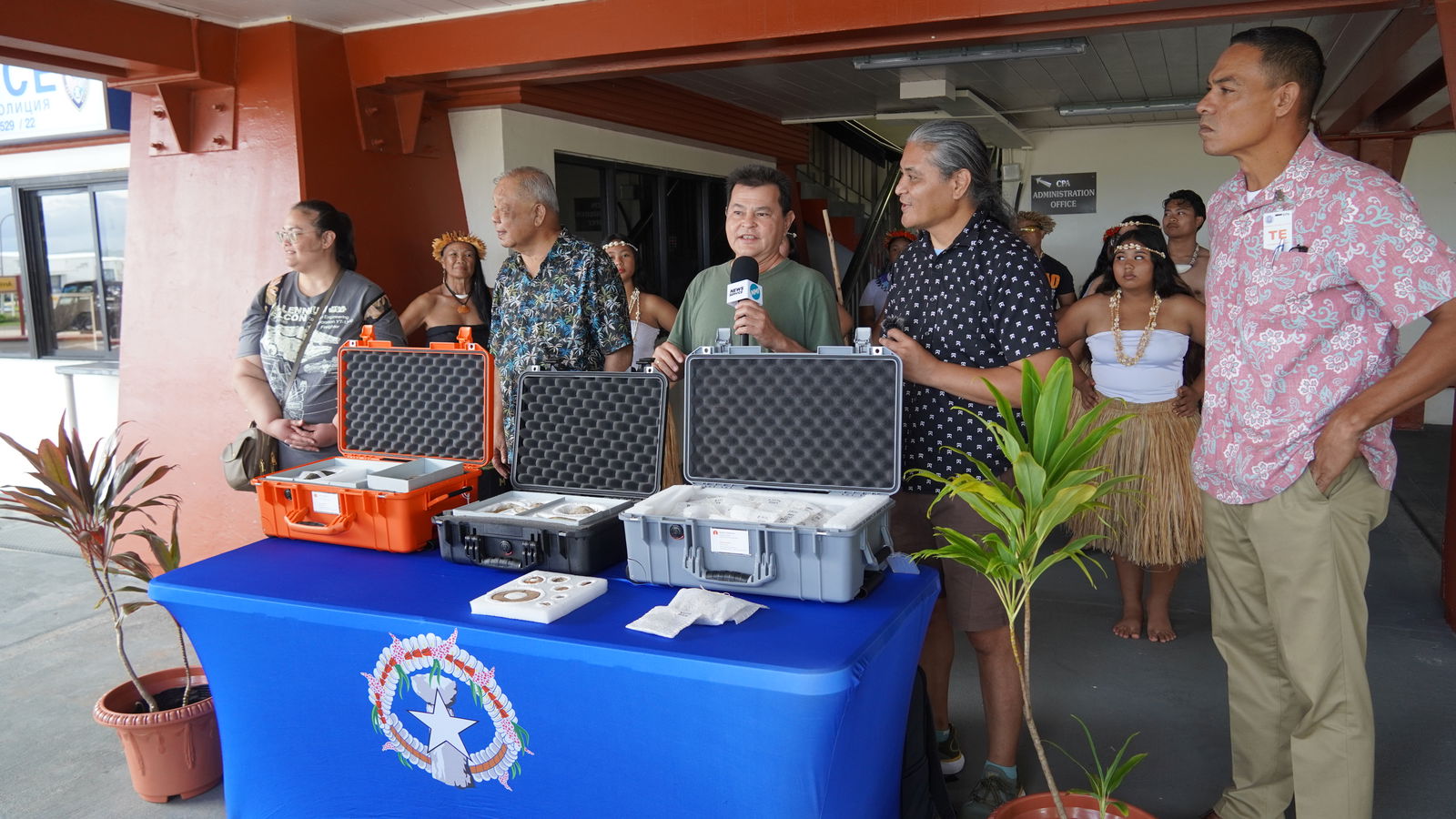
Gov. David Apatang with Chief of Staff Henry Hofschneider, NMI Museum of History and Culture Executive Director Leonard Leon and Lt. Gov. Dennis Mendiola.
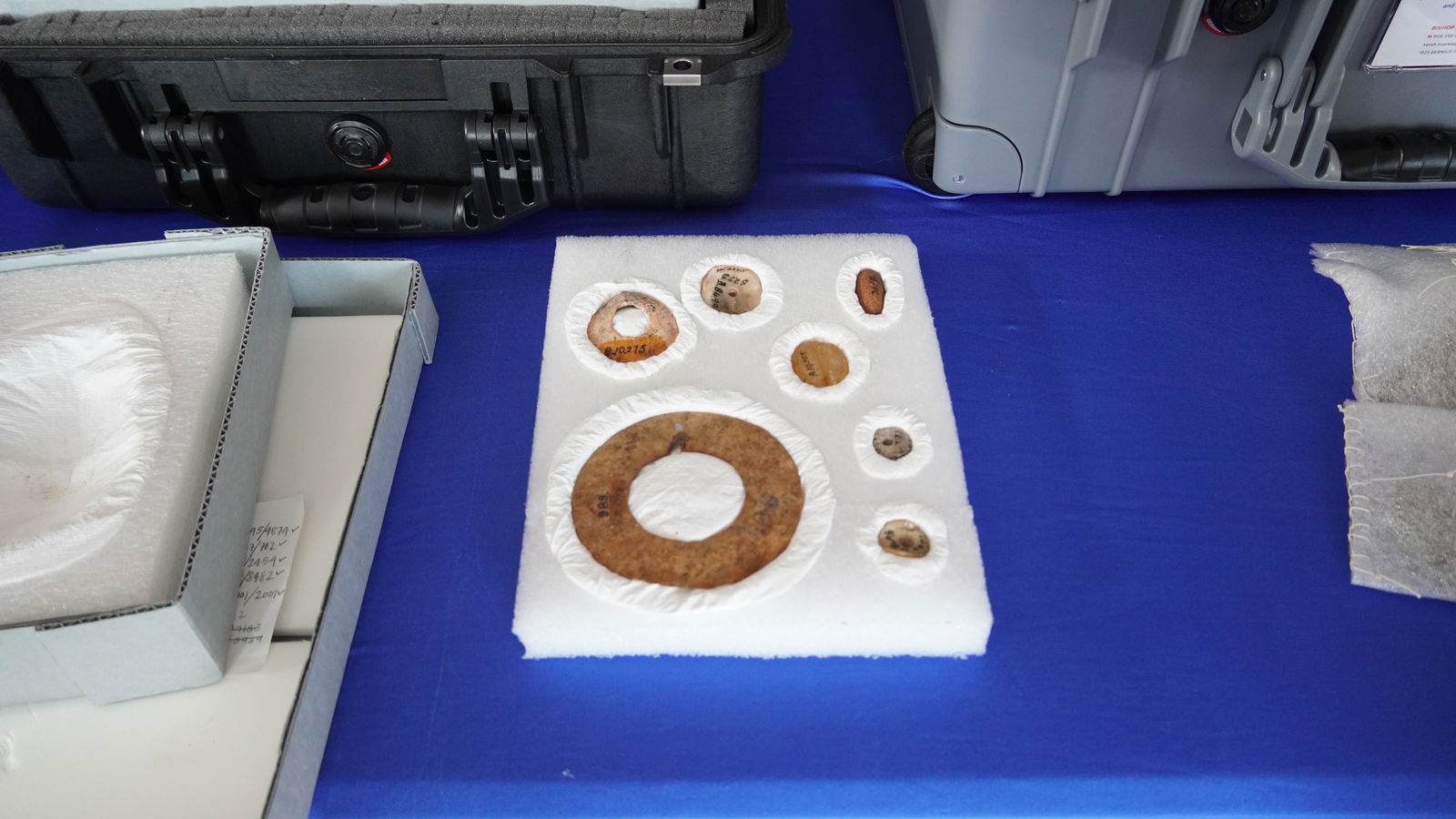
Some of the artifacts brought back from Hawaii differ from other artifacts in the local museum’s collection.
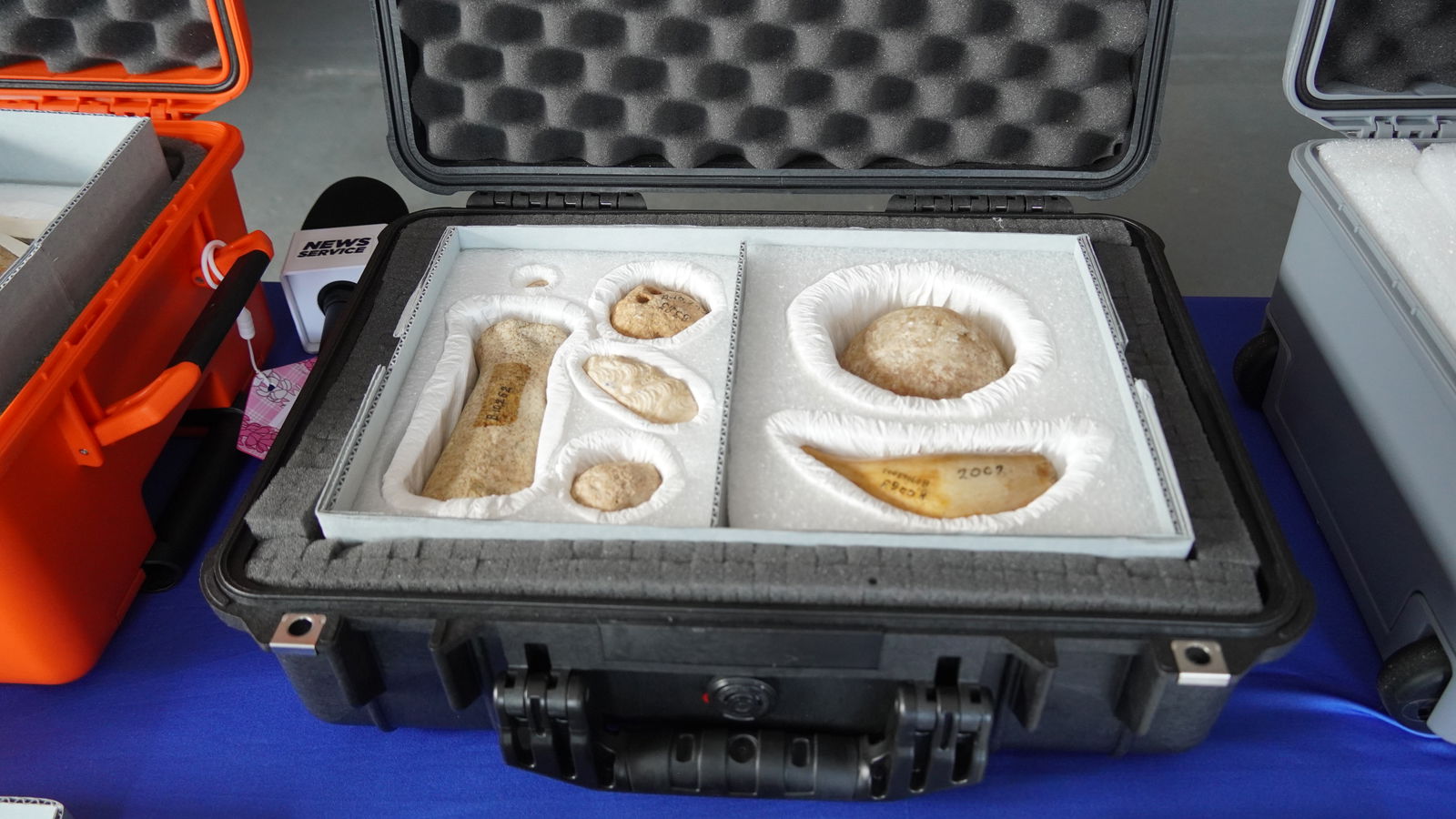
The pestle on the left side of this photo is not the usual shape found in the Marianas. It more closely resembles food pounders from other parts of Micronesia. The fishing implement in the top-right corner is made from a crystal-like material.
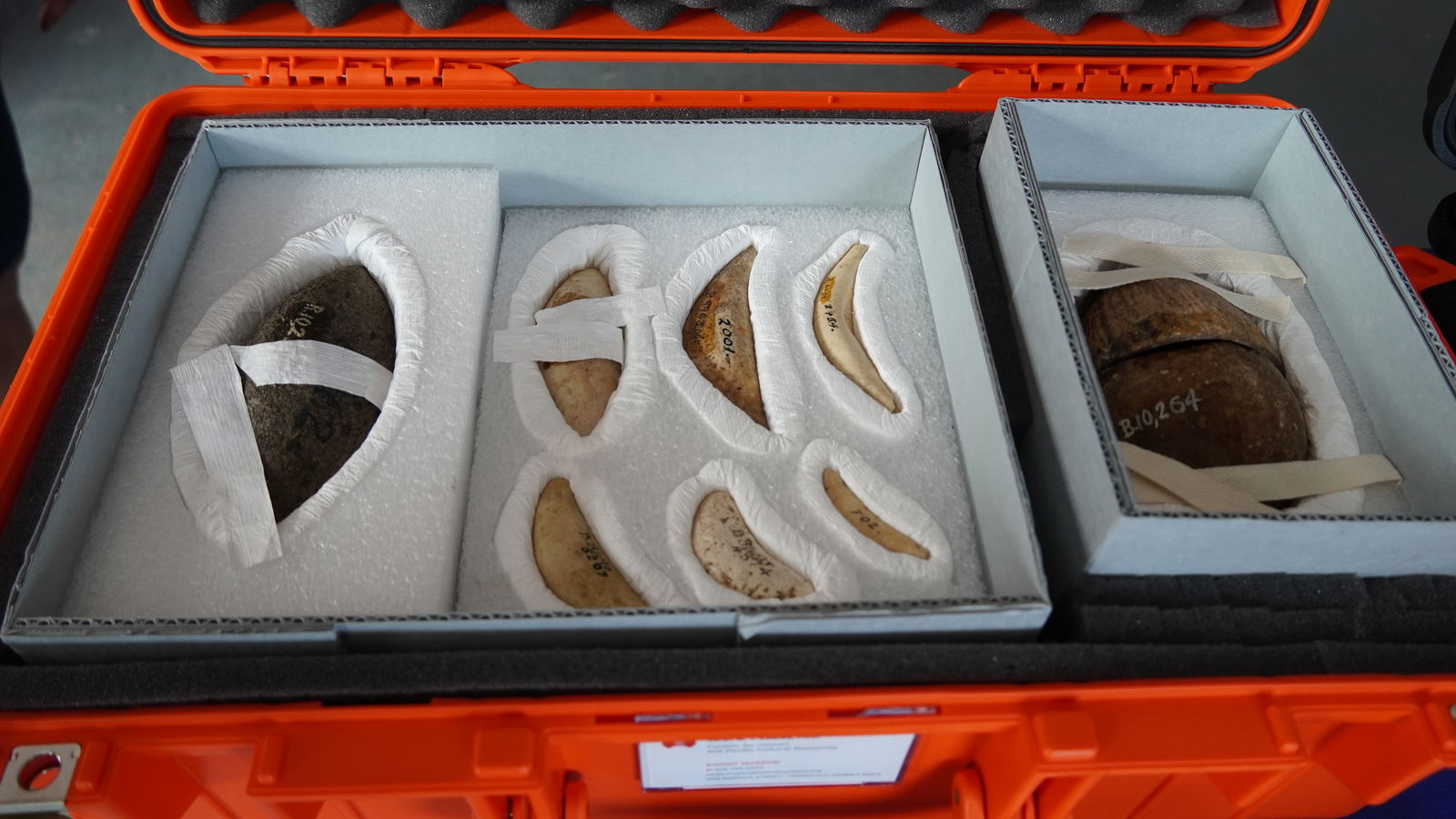
The oversized slingstone photographed here is much larger and heavier than most examples found around the Marianas. It is also carved from basalt. The “poio,” at right, a chumming device used by ancient Chamorros, is made of a crystal-like material.
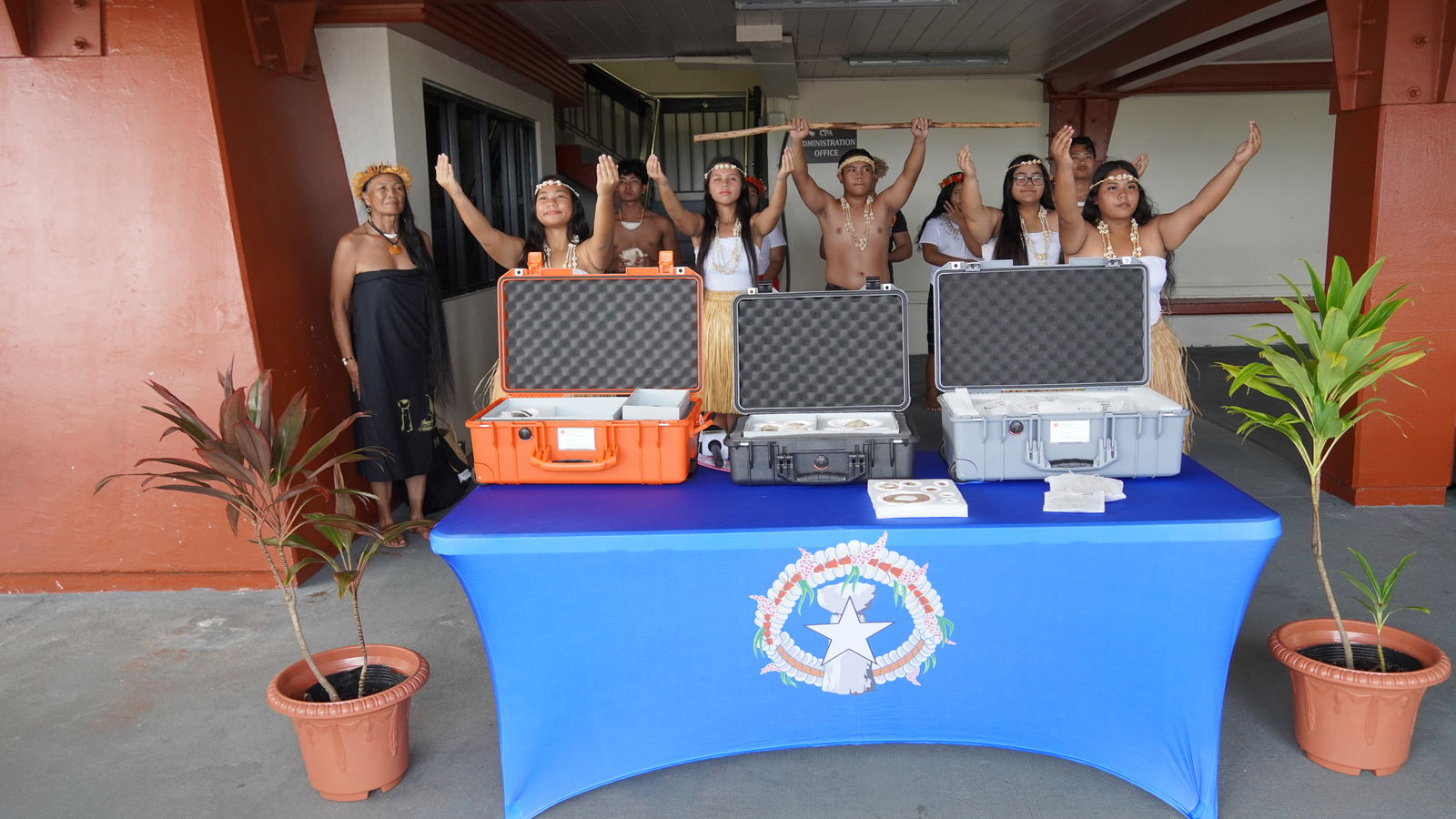
When the ancient artifacts arrived they were welcomed to their original homeland by cultural dancers at the Saipan airport.











